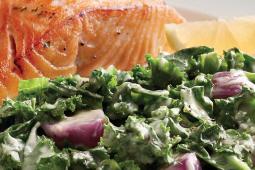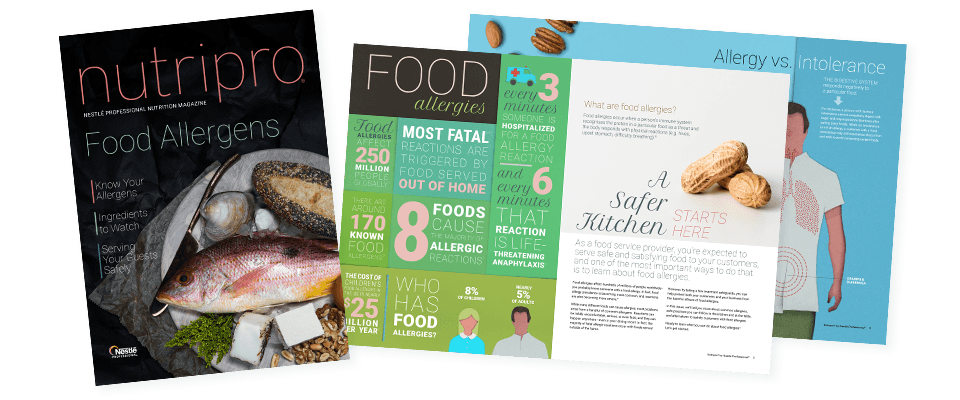
- Trends & Insights
- Nutrition, Health & Wellness
Take Food Allergies Off the Menu
Food allergies are common, and sometimes hidden. Learn how to make your operation sensitive to your patrons’ allergy issues. It’s easier than you might think.
Food allergies are a serious problem for American consumers. Though trigger foods such as wheat, eggs, and peanuts are on many operators’ radars, some are more hidden—like milk used to make caramel or the umami boost of soy sauce in an entrée prep.
According to the National Institute of Allergy and Infectious Diseases, National Institutes of Health, approximately 15 million people in the United States have food allergies, including 8% of children and roughly 4% of people age 18 or older.
Although nearly any food is capable of triggering an allergic reaction, there are eight common foods that cause 90% of reactions:
- Eggs
- Milk
- Peanuts
- Tree Nuts
- Fish
- Shellfish
- Soy
- Wheat
Childhood allergies to milk, egg, wheat, and soy often resolve, but allergies to peanuts, tree nuts, and shellfish are generally lifelong.
In addition, there are intolerances to substances such as lactose or gluten (non-celiac wheat sensitivity) which may lead people to avoid them.
Many operations have a policy of asking customers if they have any food allergies or dietary restrictions before preparing an order, so they can take any steps necessary to modify the dish (for example, not basting a steak with butter).
But here are some general tips to ensure a more allergy-friendly environment:
- Develop and designate items that are gluten free, dairy free, nut free, and so on
- List potential trigger foods in recipe descriptions, such as peanuts or shrimp stock
- Train both front- and back-of-house to know what’s in every dish and be able to answer customer questions; servers should be able to walk patrons with allergies and other restrictions through the menu
- When using convenience or prepared products, read labels carefully to discern hidden sources of trigger foods
- Be prepared to offer a few simple choices like broiled chicken, steamed vegetables, and a baked potato for food allergy sufferers
- Offer gluten free beverages, including beer
- Be aware of less obvious uses of trigger foods, like buttermilk or sour cream in salad dressings and sauces, or walnut oil for sautéing
- Prevent cross-contact between foods (this is different from cross-contamination, which refers to micro-organisms):
- Always wash hands and change gloves between preparing different menu items
- Clean and sanitize surfaces between every menu item: countertops, cutting boards, flat-top grills, etc
- Use different fryers for fish/shellfish and other foods
- Always use clean kitchen tools for food preparation: pots, baking sheets, utensils, cutting boards, etc
- Prepare meals on top of barriers like cutting boards, foil, deli paper, etc
- If a mistake is made, start over and remake the allergy-friendly item
Sources: National Institute of Allergy and Infectious Diseases, National Institutes of Health; FARE (Food Allergy Research & Education)
The information provided is based on a general industry overview, and is not specific to your business operation. Each business is unique and decisions related to your business should be made after consultation with appropriate experts.
Nestlé Professional offers a number of gluten free products in the Minor’s®, Maggi®, and Stouffer’s® brand families, as well as those that have no added MSG.
For more information, read this Nutripro Fact Sheet on Food Allergies.






